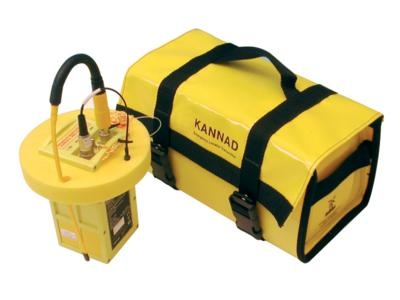Mon, Feb 02, 2015
Devices Help Pinpoint Positioning And Location Data
Southwest Airlines plans to deploy survival ELTs across its fleet of 737 aircraft. The Kannad Survival Emergency Locator Transmitters will be acquired from McMurdo Group, and will eventually be aboard all 636 of the carrier's airplanes.

ELTs, which are a key component of passenger and crew safety in the event of an emergency, enable first responders to locate the aircraft as soon as possible and potentially save more lives. Survival ELTs are removable from the aircraft and are stowed to facilitate usage by crew members in emergency situations. The ELTs were provided by McMurdo’s aviation partner, Aviall Services, Inc.
McMurdo’s Kannad ELTs are already used by some of the world’s largest aircraft and airline brands including Airbus, Boeing, Bombardier, Pilatus, British Airways, United Airlines and China Airlines. The high-performance distress beacons provide the most innovative technology available including pin-point positioning and location data for optimal rescue response time.
“For over 25 years, Kannad has provided aircraft manufacturers and airlines with high-performing and highly reliable search and rescue technologies providing redundant transmission and GPS,” said Jean-Yves Courtois, CEO of McMurdo Group. “We are proud to be the search and rescue ELT provider entrusted with providing critical, timely location identification of Southwest's aircraft in the event of an emergency.”
In a typical search and rescue scenario an emergency signal from an ELT or distress beacon is relayed via satellite to Mission Control Centers and Rescue Coordination Centers for eventual rescue team deployment. This search and rescue ecosystem (known as COSPAS-SARSAT) has helped to save over 37,000 lives since 1982. McMurdo is the industry’s only provider of this end-to-end search and rescue solution from aviation/maritime/military/personal distress beacons to satellite ground station communications to rescue response solutions.
(Image provided by McMurdo Group)
More News
Aero Linx: Model Aeronautical Association of Australia MAAA clubs are about fun flying, camaraderie and community. For over 75 years, the MAAA has been Australia’s largest fl>[...]
Touchdown Zone Lighting Two rows of transverse light bars located symmetrically about the runway centerline normally at 100 foot intervals. The basic system extends 3,000 feet alon>[...]
“Discovery and innovation are central to our mission at Virgin Galactic. We’re excited to build on our successful record of facilitating scientific experiments in subor>[...]
How To Get A Story On Aero-TV News/Feature Programming How do I submit a story idea or lead to Aero-TV? If you would like to submit a story idea or lead, please contact Jim Campbel>[...]
Student Pilot Reported That During Rotation, “All Of A Sudden The Back Of The Plane Kicked To The Right..." Analysis: The student pilot reported that during rotation, “>[...]
 ANN's Daily Aero-Linx (05.02.24)
ANN's Daily Aero-Linx (05.02.24) ANN's Daily Aero-Term (05.02.24): Touchdown Zone Lighting
ANN's Daily Aero-Term (05.02.24): Touchdown Zone Lighting Aero-News: Quote of the Day (05.02.24)
Aero-News: Quote of the Day (05.02.24) ANN FAQ: Contributing To Aero-TV
ANN FAQ: Contributing To Aero-TV NTSB Final Report: Cirrus Design Corp SR20
NTSB Final Report: Cirrus Design Corp SR20



